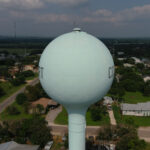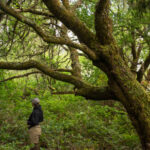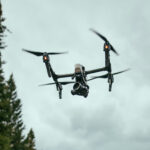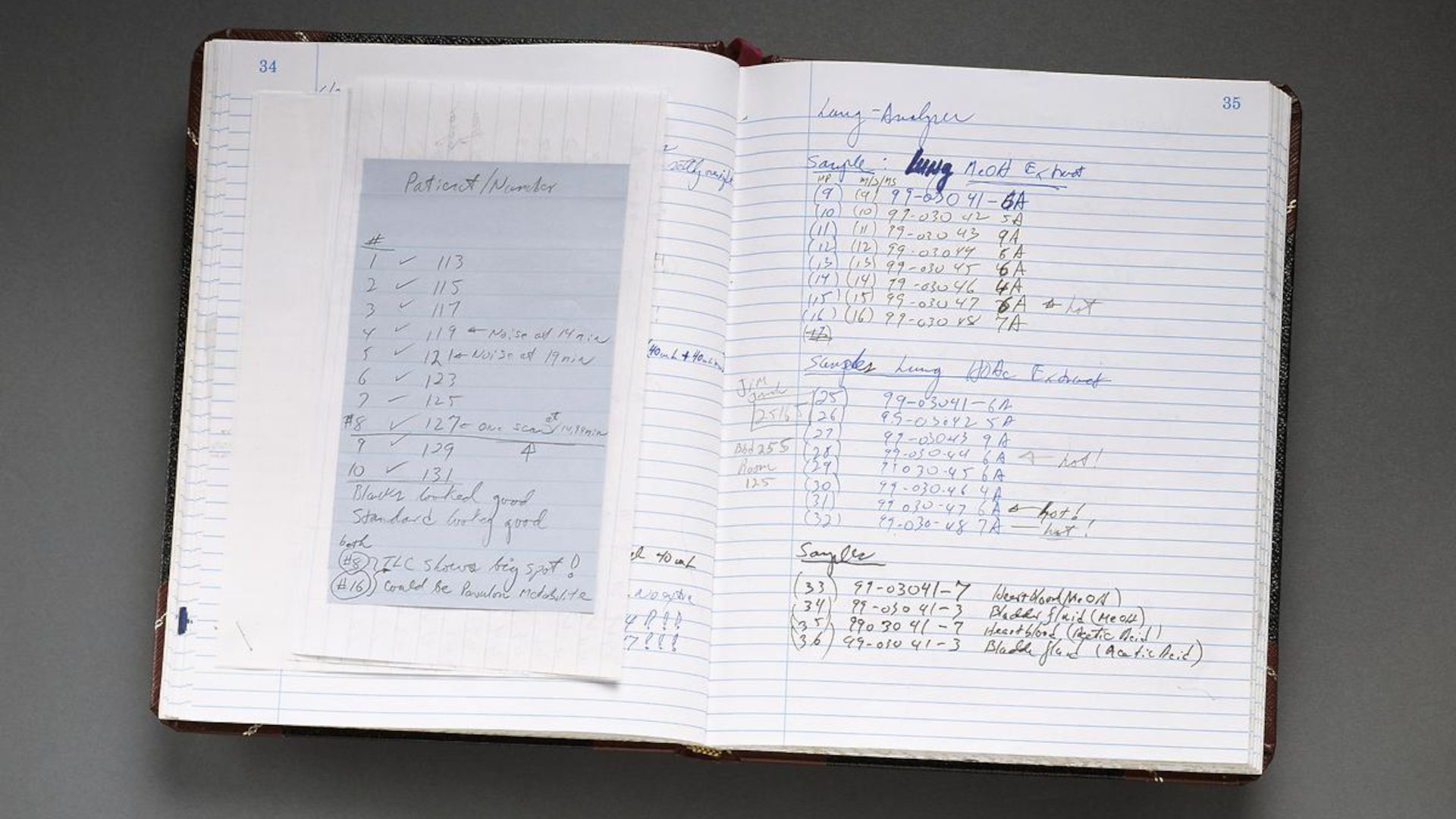Nuclear weapons laboratories don’t often help solve serial-killer cases. But in the investigation of Efren Saldivar, data from such a lab provided the clinching evidence that led to his conviction on six counts of murder.
As a respiratory therapist at Glendale Adventist Medical Center in California, where he started working in 1989, Saldivar was at times tasked with caring for terminally ill patients. One day in 1998, according to a report from the Los Angeles Times, the hospital got a tip that someone had “helped a patient die fast.”
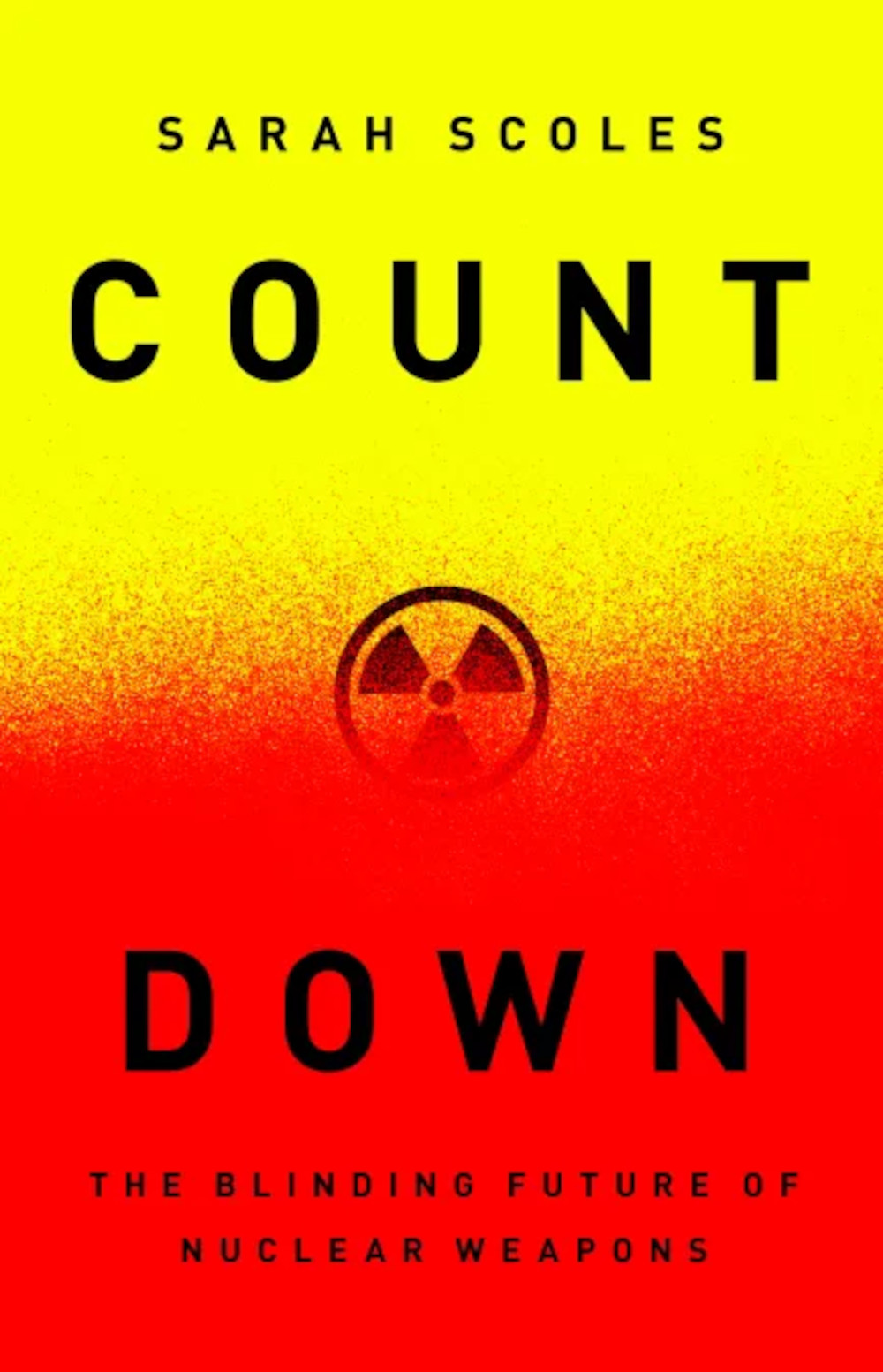
WHAT I LEFT OUT is a recurring feature in which book authors are invited to share anecdotes and narratives that, for whatever reason, did not make it into their final manuscripts. In this installment, Sarah Scoles shares a story that didn’t make it into her recent book “Countdown: The Blinding Future of Nuclear Weapons” (Bold Type Books).
Hospital officials had previously investigated Saldivar because of an internal tip about alleged misconduct — he had a reputation for having a “magic syringe,” as one coworker reported. Police soon became involved, calling Saldivar in for questioning.
During that session, Saldivar confessed to dozens of murders after his employment began, and continuing up to 1997, stating that he poisoned patients with overdoses of the paralyzing chemicals pancuronium bromide, also known as Pavulon, and succinylcholine chloride. He was arrested immediately.
But there was little physical evidence to back up his self-incriminating claims. And without that outside corroboration, authorities had to set Saldivar free — a freedom during which he publicly retracted his confession, citing his own depression and pressure from a detective as reasons for the alleged lies.
Now left without Saldivar’s word, investigators scrambled for actual evidence. They thought the chemical part of the confession might hold the key: Perhaps prosecutors could prove Pavulon and succinylcholine chloride were in his victims’ systems when they died.
Police procedurals like “CSI” often make such tasks look simple — but identifying volatile toxic substances in the bodies of long-dead patients is anything but. So the task force investigating Saldivar sought help from the American Academy of Forensic Sciences, which pointed them in an unexpected direction: Lawrence Livermore National Laboratory, some 300 miles up the California coast in the San Francisco Bay Area.
Livermore, run by the National Nuclear Security Administration, was founded after the end of the Manhattan Project to help develop the hydrogen bomb. More recently, Livermore scientists’ main task is to maintain and modernize nuclear weapons. But within its gates, the lab also hosts the Forensic Science Center, which conducts forensic research, mainly for national-security cases, into chemical, biological, radiological, nuclear, and explosive materials — and any combination of those that might appear in, say, a terrorist attack, or an accident at a hazardous waste site. (Scientists refer to such hypothetical amalgamations as “multihazard.”)
Police procedurals like “CSI” often make the science look simple — but identifying volatile toxic substances in the bodies of long-dead patients is anything but.
Given those specialties, the center sometimes gets called on to help with tricky law-enforcement situations. Those include both general requests, like an analysis of different kinds of pepper spray, and specific local and federal inquiries, like Efren’s or that of a super-sophisticated pipe-bomber from the same period — cases in which few others are quite as qualified to identify and trace the origins of slippery substances.
That’s the reason the Forensic Science Center is sometimes called “the lab of last resort.” In Saldivar’s case, Livermore scientists created new methods to identify degraded chemicals, and helped convict the man who became known as the “Angel of Death.”
At the Forensic Science Center, “we like the problem children,” said current director Audrey Williams. “We want the weird samples.”
The center’s scientists analyze scary samples, help develop countermeasures — better antidotes for toxins like nerve agents — and also perform basic research on materials in the lab so that knowledge can be used in the field. “We do this R&D and develop great methods,” Williams said. “You hit the pause button on your R&D to analyze the sample.” During the course of that analysis, if the scientists hit challenges or see gaps, they can take them back to the R&D realm and figure out how to handle them.
That mix of basic and applied research is a key tenet of the center, which was founded in 1991, as the Cold War was coming to a close. “The director saw science that could be useful,” said Williams.
When a sample arrives at the Forensic Science Center, the substances of interest may be part of a tissue sample, suspended in water, holed up in plants, or mixed into soil. Or they might just be a trace on a wipe, swiped across a suspected weaponized material.
“We like the problem children,” said Audrey Williams. “We want the weird samples.”
Most samples aren’t pure but contain lots of ingredients that may overpower the signature of the suspicious substance, which may also have degraded or decayed. To analyze the sample, the Livermore scientists can’t just find the substance of interest: They have to pinpoint and measure all the material’s constituent parts, using tools like chromatography and electrophoresis to separate chemical and biological components, and spectrometry to identify those components.
Williams refers to the center’s analytic process as holistic. Maybe unsurprisingly, the center employs “mostly chemists and biologists that we’re turning into chemists,” she said.
In one 1999 case, the center processed a sample that Bulgarian customs officials had found in the back of a car crossing the border. Hidden in an air compressor was a lead cylinder, inside of which, like a nesting doll, was a glass vial containing a black powder.
Identifying the powder as highly enriched, weapons-grade uranium was straightforward; trying to suss out its origin was more complicated, involving analysis of the glass to learn more about its origin and maker, and the paper on the vial, to find out what species of tree it came from. Authorities concluded this smuggled material was likely processed into its weapons-relevant form in the 1990s, and may have been stolen when the kinds of facilities that produced such substances had lax security after the end of the Cold War.
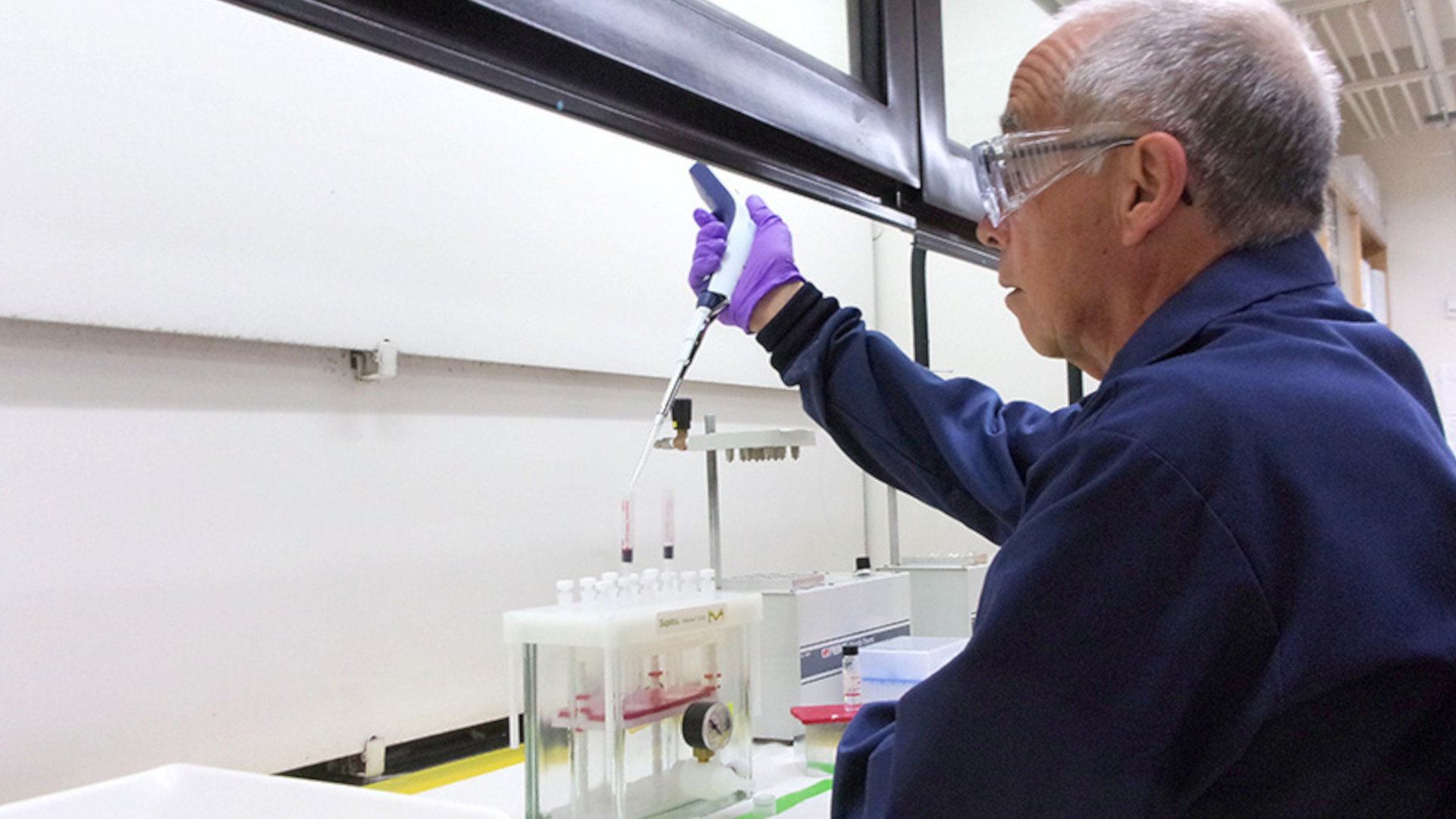
Livermore is the only place in the country certified to conduct forensics on this whole host of dangerous substances: chemical, biological, radiological, and explosive materials. Perhaps the hardest certification to get is the one with the Organization for the Prohibition of Chemical Weapons, an international body tasked with enforcing the 1997 Chemical Weapons Convention. The center got its first certification in 2003, and has mostly kept up good grades, except for one C that resulted in a suspension.
The certification isn’t just a checkbox: It’s an all-hands-on-deck test. The organization sends a number of samples to the center and gives the researchers two weeks to look for suspected chemical weapons compounds. A team of around 22 scientists meets twice a day for such a test, said Williams, and works 10 to 14 hours a day. And it can get tricky: In the 2020 test, for instance, the exam was especially difficult, not just because the chemicals were at low concentrations, but because some were at very high levels, shielding others from analytical view. In the end, the center’s scientists identified all the chemicals they were supposed to find.
In the case of Saldivar, though, the center’s scientific results became very public. Given how often lab analysis for criminal investigations becomes part of the public court record, that’s not unusual, although this was a particularly high-profile case.
The center’s study began when the Los Angeles County coroner’s office unearthed the bodies of 20 suspected victims. (To this day, no one knows for sure how many deaths Saldivar contributed toward, although in one confession he estimated between 100 and 200, including patients he simply neglected.) The Forensic Science Center’s then-director, Brian Andresen, assisted with the first few autopsies, to show the coroner how to get samples the lab could use.
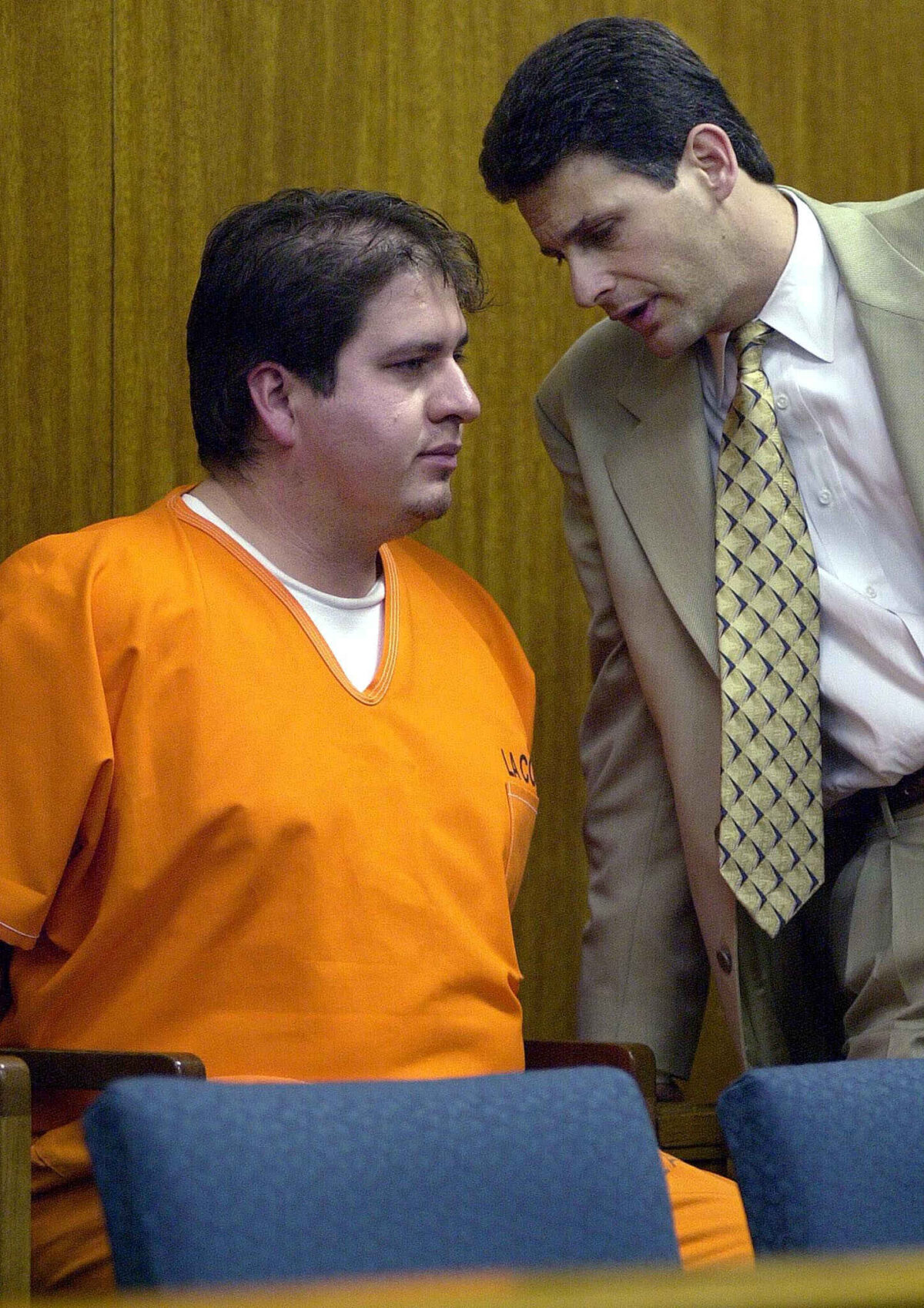
Efren Saldivar (left) consults with public defender Jeffrey Treloar during an arraignment on January, 11, 2001. Saldivar eventually pleaded guilty to six counts of murder.
Visual: Scott Nelson/AFP via Getty Images
One of the chemicals Saldivar had allegedly wielded as poison, succinylcholine chloride, creates short-term paralysis, but converts itself quickly into compounds that normally appear in the human body. Given that, Andresen thought it was unlikely he’d find any evidence of the substance years after their deaths.
So he turned instead to Pavulon, a muscle relaxant. It was also likely, they thought at the time, to have become invisible, dissipating in the body, but the Livermore team — Armando Alcaraz and Patrick Grant, in addition to Andresen — gave detection a shot anyway.
They developed a new method for pulling Pavulon from tissue. The team’s research, later published in two papers in the Journal of Forensic Sciences, involved first homogenizing the tissue samples by mixing them with a buffer until they were stirred uniformly into the solution.
The team, in a process called solid-phase extraction, then sent the solution through a polymer — a material made of large molecules that are made of smaller molecules stuck together in a repeating pattern. This material essentially acts like a net, catching the compounds of interest and letting the rest pass through. Then they pulled the compounds from their net, using solvents to dissolve them individually, kind of like pouring water over a salt lick, which would give you salty water.
To get control samples, they injected pig livers — both new and artificially aged — with Pavulon to see how a positive result would look if run through the same polymer tests.
It was a sensory process, in addition to an analytical one. “Even working in hoods the odor got into everything, even your clothes,” Alcaraz told Chemical and Engineering News in an article published in 2008.
“I was very surprised at first that I found anything.”
Once they had their sample compounds from the exhumed bodies and the pig livers, the scientists put them through a bevy of chromatographic and spectrometric tests, searching for the signatures of Pavulon.
Six of the 20 human samples came up positive, a result that outside sources verified. “I was very surprised at first that I found anything,” Andresen said in a Livermore publication from the time.
On January 5, 2001, the results were reviewed by the Glendale Task Force and the deputy district attorney at the Los Angeles Coroner’s office. Four days later, Saldivar was arrested. He later pleaded guilty to six counts of murder, based in large part on the six positive samples the center found. He was sentenced to life without parole. The prosecution did not seek the death penalty in part because of the uncertainties of using a new scientific protocol, and the possibility of a long and expensive case as a result.
Looking back today, Williams sees the painstaking lab work that put Saldivar away as very much part of the center’s broader mission: “You follow the threat,” she said, “and follow the need.”




